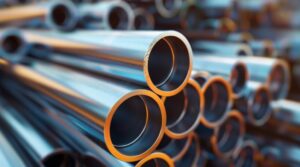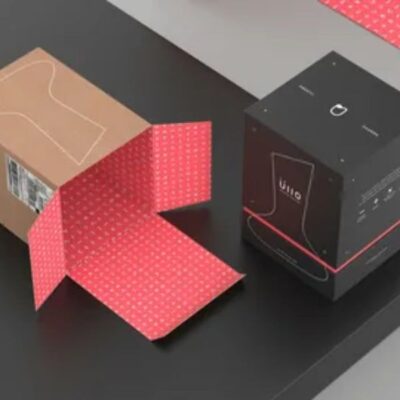Building or fixing something in Singapore’s heat calls for smart choices—especially when it comes to the materials you use. Pipes might not look exciting, but the right ones make all the difference. A copper tube can shape your aircon or water system for its long-lasting performance.
Pick the wrong one, and you might face leaks, weak flow, or early damage. Before you dive into your project, take a closer look at what makes copper a trusted pick—and what you need to know before buying it.

Why Tubing Matters Most in Construction and Air Conditioning
Building and aircon work, copper offers strong, long-lasting results. Builders and technicians often pick copper because it resists rust and handles heat well. This metal supports cooling systems with steady flow and low risk of cracks.
Copper stands out because:
- Fights corrosion even in wet or humid places
- Bends easily without snapping
- Keeps flow rates smooth and steady
- Works well with both hot and cold temperatures
Are you setting up an aircon copper pipe? The type of Copper conduit you select affects how well your system cools your space.
Types of Tubing Explained
Copper conduit comes in several grades. Each one fits a different task. Picking the right type improves function and life span.
Common types include:
- K-type – Thick-walled, great for underground or heavy-duty use
- L-type – Standard choice for residential and commercial tasks
- M-type – Thinner and more budget-friendly, but less durable
- ACR Tubing – Made for refrigeration and air conditioning setups
These grades differ in wall thickness and pressure limits. While all may look the same at first glance, the difference becomes clear once they’re in action.
Key Factors to Consider Before Buying
Buying blindly can cause trouble later. Before you visit a copper tube supplier Singapore, think about your needs and project goals.
Look at:
- Tube size and thickness — match it to your system’s specs.
- Type of copper — soft for bends, hard for long straight runs.
- Installation method — will you solder, braze, or use push-fit connections?
- Local rules — follow Singapore’s safety and material standards.
Each project brings its demands. While it’s tempting to choose the cheapest option, focus on what suits your system best.
Common Mistakes to Avoid
Sometimes people make quick choices without planning. That leads to delays, damage, or extra costs.
Avoid:
- Using the wrong diameter weakens performance.
- Skipping quality checks before installation.
- Mixing different metal fittings, which sparks corrosion.
- Forgetting to account for future maintenance.
Every smart decision starts with careful thought. You don’t need to be an expert to avoid basic errors—just stay aware and ask questions when unsure.
Safe Storage and Handling
Even the best Copper conduit can fail if stored poorly or handled roughly. Protecting materials before installation helps avoid dents or contamination.
Remember to:
- Store tubes in a dry, covered area.
- Keep them off the floor to prevent contact with moisture.
- Avoid stacking them too high or bending them accidentally.
- Plug open ends to stop dirt or insects from getting inside.
Clean copper leads to smooth flow and better system results. Don’t ignore this step before the build begins.
How to Check for Quality
Not all copper is created equal. Low-grade tubes might split or deform when pressure rises. Always inspect your materials before installation.
Here’s how:
- Check the weight — lighter tubes may mean thinner walls.
- Look at the finish — a shiny, smooth surface often signals better quality.
- Feel for kinks or flat spots — these weaken the tube’s strength.
- Ask for certifications — ensure the tube meets local or international standards.
By spotting flaws early, you reduce future issues and keep costs under control.
Copper Tube vs. Other Piping Materials
You might wonder why copper stays popular when plastic and steel pipes exist. Copper has earned its place with decades of reliable performance.
Compare with:
- PVC – Cheap and easy to install, but weak in high heat.
- Steel – Strong but prone to rust and harder to cut.
- PEX – Flexible and light, though not as tough under sunlight.
While other options may suit short-term fixes, copper wins for long-term safety and function. That’s why so many choose it for aircon copper pipe systems in Singapore.
How Climate Affects Your Choice
Singapore’s climate stays warm and humid year-round. That adds wear and tear to any metal, especially when exposed to the outdoors. Fortunately, copper holds up better than many other options in tropical settings.
Consider:
- Rain exposure and roof leaks.
- High humidity near the coast.
- Indoor condensation in cooling units.
- Rapid heating and cooling cycles.
Choose copper conduit treated or coated for added protection if your setup faces outdoor elements. Otherwise, even copper may wear out faster than expected.
Installation Do’s and Don’ts
Fitting copper conduit needs care. A poorly fitted joint or incorrect tool can cause cracks or leaks. Use the right steps to secure a lasting fit.
Do:
- Cut with a tube cutter for smooth edges
- Deburr the ends to avoid clogging.
- Use proper flux and heat control when soldering.
- Test for leaks before sealing walls or panels.
Don’t:
- Use pliers or makeshift tools.
- Force tubes into tight bends.
- Overheating the joint weakens it.
- Skip pressure tests.
Good installation saves money on future repairs and keeps systems running as they should.
Where to Start
Before you walk into a shop or talk to a copper tube supplier Singapore, write down your project needs. Take photos of your current setup if needed. Ask for help from trained professionals when you feel stuck.
Remember:
- Plan before buying
- Use quality materials
- Follow local standards
- Don’t rush your choice.
With the right tube, your project stands strong for years. Choose wisely, and your system will thank you later.
Final Thoughts
The right copper tube may look easy, but it shapes how well your project works. From cooling units to water pipes, the right tube brings strength, smooth flow, and long life. Take time to plan, match the size, and choose strong parts instead of quick fixes.
Care and smart fitting, your system runs without trouble for years. Whether you build something new or fix something old, smart choices now stop big problems later. Build with care and clear goals.




